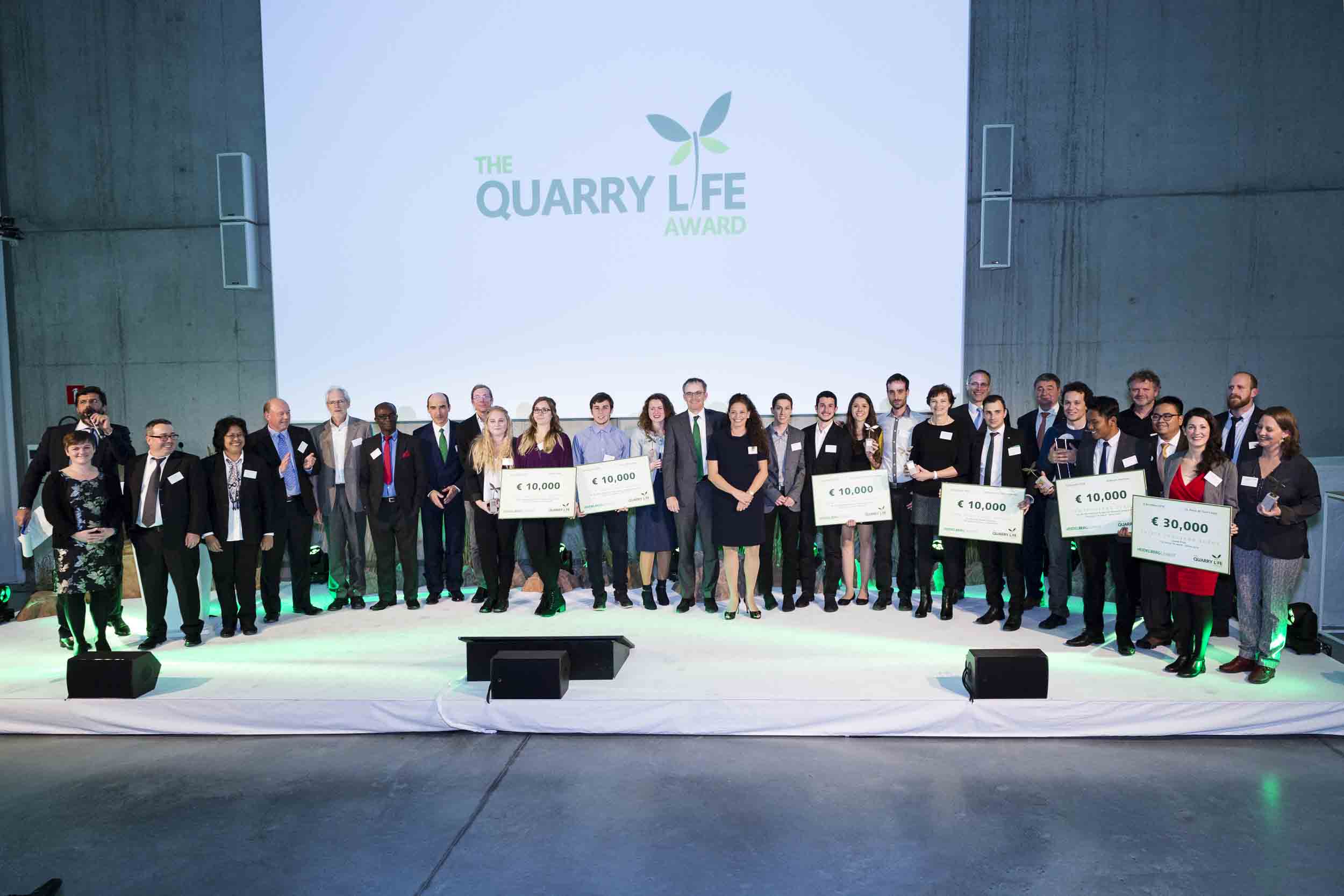
The winners of
In his opening speech, Dr Bernd Scheifele, chairman of HeidelbergCement’s managing board, emphasised the importance of the competition to the company: “The protection of species diversity and the sustainable extraction of raw materials are fundamental pillars of our sustainability strategy. Through the Quarry Life Award, we promote new knowledge about biodiversity in our quarries as well as innovative, practical conservation concepts. The projects and research results do not only serve ourselves alone. We seek to cooperate with various stakeholders from the spheres of education, science and conservation to increase awareness of the biological value of quarrying sites.”
Daniel Calleja Crespo, director general for Environment at the European Commission, also underlined the importance of cooperation between industry, conservation organizations and civil society to help promote species diversity as part of environmental protection.
The international jury, composed of Dr Carolyn Jewell (HeidelbergCement), Dr Erasmus Owusu (University of Ghana), Dr Ani Mardiastuti (Bogor Agricultural University, Indonesia), Dr Michael Rademacher (University of Applied Sciences Bingen, Germany), Richard Grimmett (BirdLife International), Dr Ulrich Tränkle (AGLN, Landscape Planning & Nature Conservation Management) and Daniel Gauthier (former member of the HeidelbergCement Managing Board), presented the Quarry Life Award 2016 on the following projects:
Grand Prize (€30,000):
Linking quarries and surroundings by restoration ecology for semi-aquatic mammals
The Grand Prize was awarded to a Spanish team led by Dr Rocío de Torre Ceijas. The project investigated the ecological connectivity of waterbodies in gravel quarries, and how to enhance this connectivity to the quarry’s surroundings for a positive effect on biodiversity. The researchers used otters as a bio-indicator because of their habitat needs.
International prizes by category (€10,000):
Habitat & species research
Arthropod & earthworm diversity as a bio-indicator for reclamation success
Around the world, reclamation success is often solely measured on the growth of planted vegetation - which does not give a full picture. To improve this, a project team in Indonesia investigated the use of arthropods and earthworms as bio-indicators of habitat complexity to evaluate the success of woodland creation activities in the Hambalang quarry.
Project leader: Wahyudi Nelvianto, Indonesia
Student project
Nature only works if we do it together - Students “understand” insects and biodiversity
This community project saw a group of pupils from Evangelische Grundschule Holzdorf learning about wild bees and their role in the ecosystem. Through the project, they built a bee hotel, tended a wildflower meadow and developed an information board about bees with the help of recovering addicts from HEPORÖ GmbH.
Project leader: Elisabeth von Campenhausen, Germany
Biodiversity Management
Optimizing wetland functions to local conditions in connection to quarries
At the
Project leader: Emma Svahn, Northern Europe
Education and Raising Awareness
Biodiversity in space and time
This project had a two-pronged approach: first, to assess the habitats and biodiversity of the Pechurki quarry; second, to attract public attention and raise awareness of biodiversity conservation activities. To achieve this, the team delivered more than 70 eco-lessons, performed quarry tours, attended conferences, engaged with the media, created an animated video and even organized their own essay and photographic competitions.
Project leader: Yanina Dmitrakova, Russia
Beyond quarry borders
Stepping ponds - enhancement of connectivity for amphibians in riverside gravel pits
This project evaluated the potential of gravel pits to improve and increase landscape connectivity for amphibians, one of the most globally threatened taxa due to diminished habitats. The team made recommendations on creating corridors to connect water bodies; how to inhibit the spread of the invasive exotic red swamp crayfish and advice to foster the natterjack toad population.
Project leader: Daniel Gómez de Zamora Martínez, Spain






